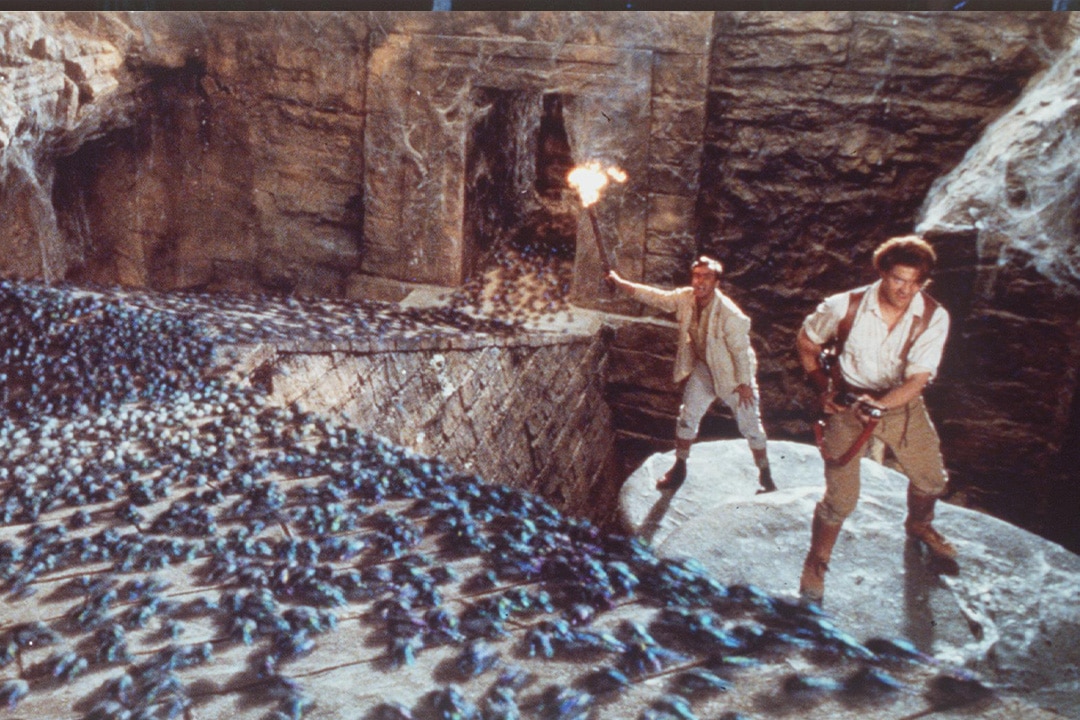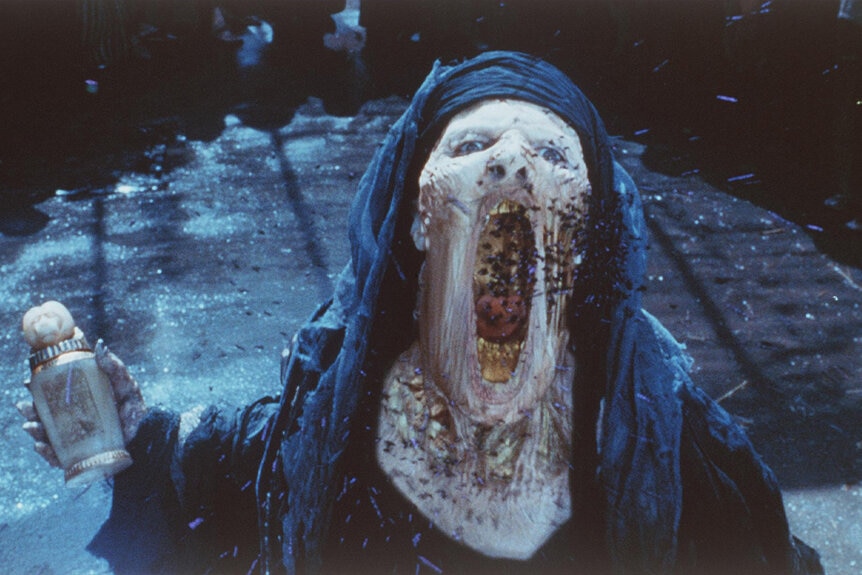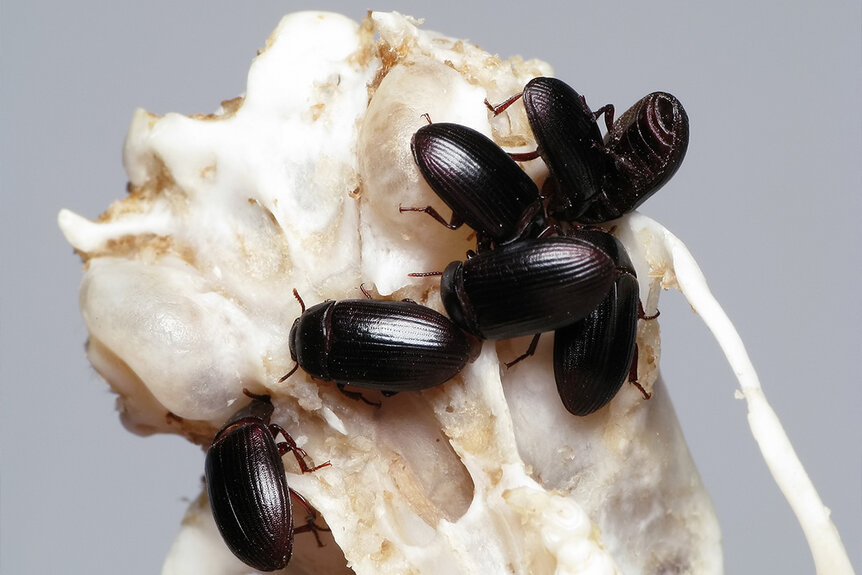Create a free profile to get unlimited access to exclusive videos, sweepstakes, and more!
Are Those Flesh-Eating Scarabs from The Mummy Real?
The Mummy's scarabs aren't real, but they are based on real animals.

When The Mummy (streaming now on Peacock) hit theaters in 1999, audiences were gifted the raw energy of Brendan Fraser and Rachel Weisz on a sweaty, supernatural adventure together. In exchange, we were also given a new fear in the form of flesh-eating scarab beetles.
In the mythos of the film, scarabs are carnivorous insects travelling in large numbers, capable of stripping the flesh from a person in seconds. They also play a key role in the movie’s inciting incident, the Hom-Dai ritual used to punish Imhotep. Being buried alive with them is a special torture; it is said that the scarabs eat more slowly when confined, savoring their meal for years inside the sarcophagus.
RELATED: The 6 Most Romantic Evelyn and Rick Scenes in The Mummy Franchise
Even a single scarab is deadly, perfectly happy to dig through your skin and burrow into your flesh until it finds the brain. The process appears to be exactly as painful as you imagine. The good news is the scarabs in The Mummy are an invention of the film; the bad news is they are based on real animals.
Cutting the Crap About Real Scarabs
Scarabs are real but they’re nothing like the creatures portrayed in The Mummy. In fact, scarabs aren’t just one thing. There are more than 30,000 species of beetle in the family Scarabaeidae, living all over the world. Their common characteristics are short, squat bodies and metallic coloration.
One species in particular has become most associated with the word scarab and is probably the animal you’re thinking of when you imagine an Egyptian scarab. The species Scarabaeus sacer was considered sacred in Ancient Egypt and used as a symbol of worship. You’ll find them all over the place inside Egyptian iconography, even earning a role in the Egyptian pantheon. Today, we call them Dung Beetles.
While their lifestyle of eating, rolling, and laying their eggs inside of animal feces isn’t exactly glamorous, there is something magical about them. Dung Beetles might trade in the muck of the Earth, but they navigate using the Sun, Moon, and stars. They do not, however, strip the flesh off of the bones of anyone or anything.
Dermestids, the Real Flesh-eating Beetles
The closest thing to The Mummy’s scarabs that we have in the real world are dermestids, an underappreciated participant in the removal of dead flesh. When something dies in the wild, initial decomposition is handled by a combination of bacteria, fungi, and scavengers of both the four and six-legged varieties.
A few days or weeks later, when most of the heavy lifting has been done and what’s left has dried out, the dermestids show up to pick the trimmings. If you’ve ever come upon the desiccated remains of some poor animal, you can be sure there are dermestids nearby.
Once the dermestids hatch, the larvae get to work chowing down on whatever dried out flesh they can get their mouths around. They go through a series of molts as they transition into adults, eating anything organic along the way. Their willingness to chow down on nature’s grosser offerings makes them a favorite in laboratory settings all over the world.
RELATED: Necrobotics: How Scientists Are Using dead Spiders as Corpse Claw Machines
Universities, museums, taxidermists, and crime labs often maintain their own dermestid colonies to aid in their various activities. Forensic scientists might use them to clean bones from a crime scene while museum curators and taxidermists use them to clean specimens for study and display. Usually, most of the soft tissue is removed in advance, either through natural methods or by a preparator. Then a few hundred or thousand beetles fastidiously strip any remaining soft tissue from the bones in a process known as skeletonization.
A sizeable colony left alone in a dark, warm place with a tasty meal, can clean a skeleton in a number of days. In fact, they’ll eat anything organic including clothing, furniture, and books. Which is why colonies at museums and universities are kept under careful watch. Even a few rogue individuals could do considerable damage to unguarded collections.
Despite their voracious appetites, dermestids don’t eat living things. Even if you’re fighting an ancient curse, you don’t need to worry about them, at least not while you’re alive.
Relive the timeless adventure of The Mummy, streaming now on Peacock!




























